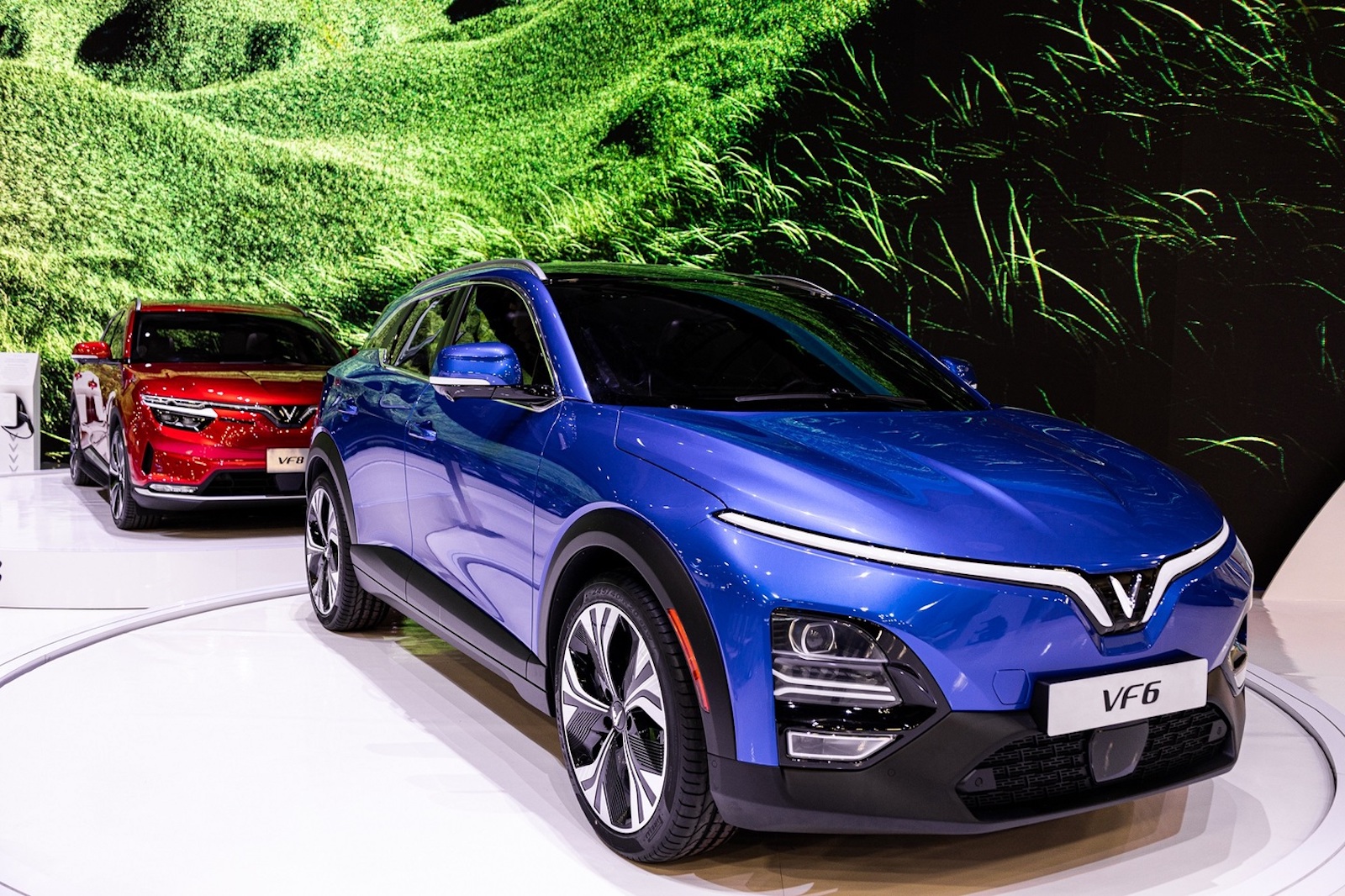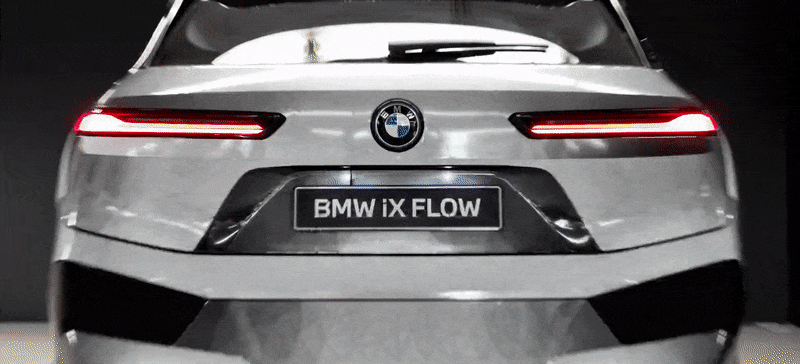Another virtual year at CES 2022 is in the bag for TechCrunch, and even though we attended the event remotely, one thing in the vehicle space was made abundantly clear: Your car is about so much more than mobility. In fact, if you think a vehicle is about getting you from Point A to Point B, think again, peasant!
Your car — at least in the eyes of automakers and tech companies — is a third space, a place where you can work or lounge or watch TV. It’s a device, connecting you with the other devices that run your life. It’s an assistant, anticipating your needs by creepily watching you and collecting data on your every movement.
The big themes this year focused on services and experiences that drivers and passengers can have inside vehicles, the advanced driver assistance systems (ADAS) and automated driving features that handle some of the drudgery of driving so you can have those experiences, and the compute power needed to deliver it all.
Of course, there was other vehicle tech that popped up: Who can forget BMW’s color-changing car? NFTs even made an appearance. Here’s the in-vehicle tech that stood out to us.
Compute power for the win
We heard a lot about digital cockpits that transform the front cab into a world of digital content, entertainment and services. Many companies threw around the term “co-pilot” and depending on how that company defined it, the co-pilot could include voice assistants or even actual driver assistance systems that can control certain functions of the vehicles. And there were deep insinuations that one should never, if one can help it, stop watching TV or streaming video – especially not when in a moving vehicle.
All of that requires processing power and at 2022 CES the automotive chip game was on.
Qualcomm’s Snapdragon Digital Chassis
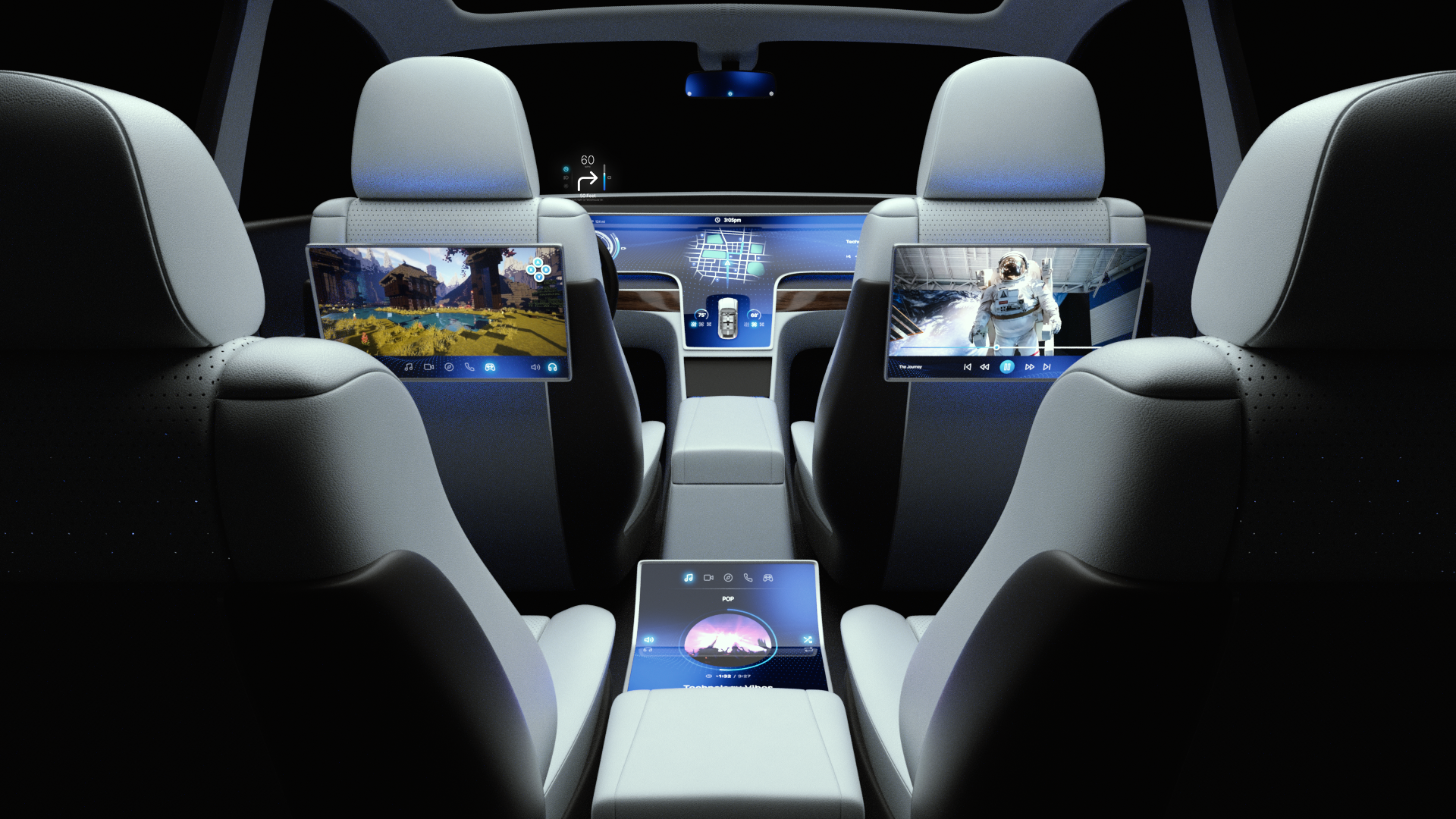
Image Credits: Qualcomm Technologies
Qualcomm doubled down on its commitment to powering automotive in-vehicle tech at CES 2022 by bringing on new OEM clients. The tech giant’s Snapdragon Digital Chassis offers automakers a platter of cloud-connected “platforms” consisting of systems-on-a-chip (SoC) and software that can be adopted in full or à la carte.
The chassis includes: the Snapdragon Ride Platform for ADAS and automated driving, the Auto Connectivity Platform for LTE, 5G connected services, cellular vehicle-to-everything (C-V2X), Wi-Fi, Bluetooth and precise positioning, and the next generation of the Snapdragon Cockpit, a digital cockpit and infotainment system.
Volvo and Honda announced plans to integrate the digital cockpit into upcoming electric vehicles, and Renault, which has already committed to bringing the cockpit into future cars, expanded the partnership to include everything the chassis has to offer. General Motors will also be relying on Snapdragon to power its next-gen ADAS.
Nvidia’s Drive Orin SoC
While Volvo’s infotainment is being powered by Qualcomm’s SoC, its new automated driving (AD) features will be powered by Nvidia’s. Autonomous trucking startup TuSimple also said at CES 2022 that it would use Drive Orin to power and scale its self-driving tech.
Nvidia’s chip is a central computer for intelligent vehicles that’s made specifically for autonomous applications. It delivers 254 trillion operations per seconds and provides the sort of auto-grade compute power needed to handle self-driving functions.
JiDU Auto, Baidu’s electric vehicle company, also announced it will use the Nvidia Drive Orin SoC (system-on-chip). This next-generation vehicle with Level 4 autonomous driving capability will make its debut at the Beijing Auto Show in April, followed by mass production and delivery by 2023.
Other companies using Drive Orin include Polestar, IM Motors, Li Auto, NIO, R Auto and Xpeng.
Intel-Mobileye
Intel subsidiary Mobileye announced plans to bring a new supercomputer to market designed to give passenger cars, trucks and SUVs autonomous driving powers.
The company introduced at the 2022 CES tech trade show a new system-on-chip called EyeQ Ultra that is purpose-built for autonomous driving. The company said the first silicon for the EyeQ Ultra SoC, which is capable of 176 trillion operations per second (TOPS), is expected at the end of 2023 with full automotive grade production in 2025.
The company also introduced at CES its next-generation EyeQ system-on-chip for advanced driver-assistance systems called EyeQ6L and EyeQ6H.
Connected car- connected home – assistants
What do you get when you combine the internet with insane processing power in a vehicle? A sci-fi world of incredible, and some might say unnecessary, tech that lets car owners sync their digital and physical worlds.
Want to program your car to order you a pizza as you leave the office so it’s hot and ready when you get home? It can be done. Feel like hearing the stats on your battery’s power and vehicle range? Speak and it shall be delivered. Want to put your feet up and watch the latest episode of “The Wheel of Time”? There’s a tech for that, too.
The in-vehicle tech displayed at CES drilled home the idea of the car as a connected device that is meant to make your life easier, smoother and more entertaining.
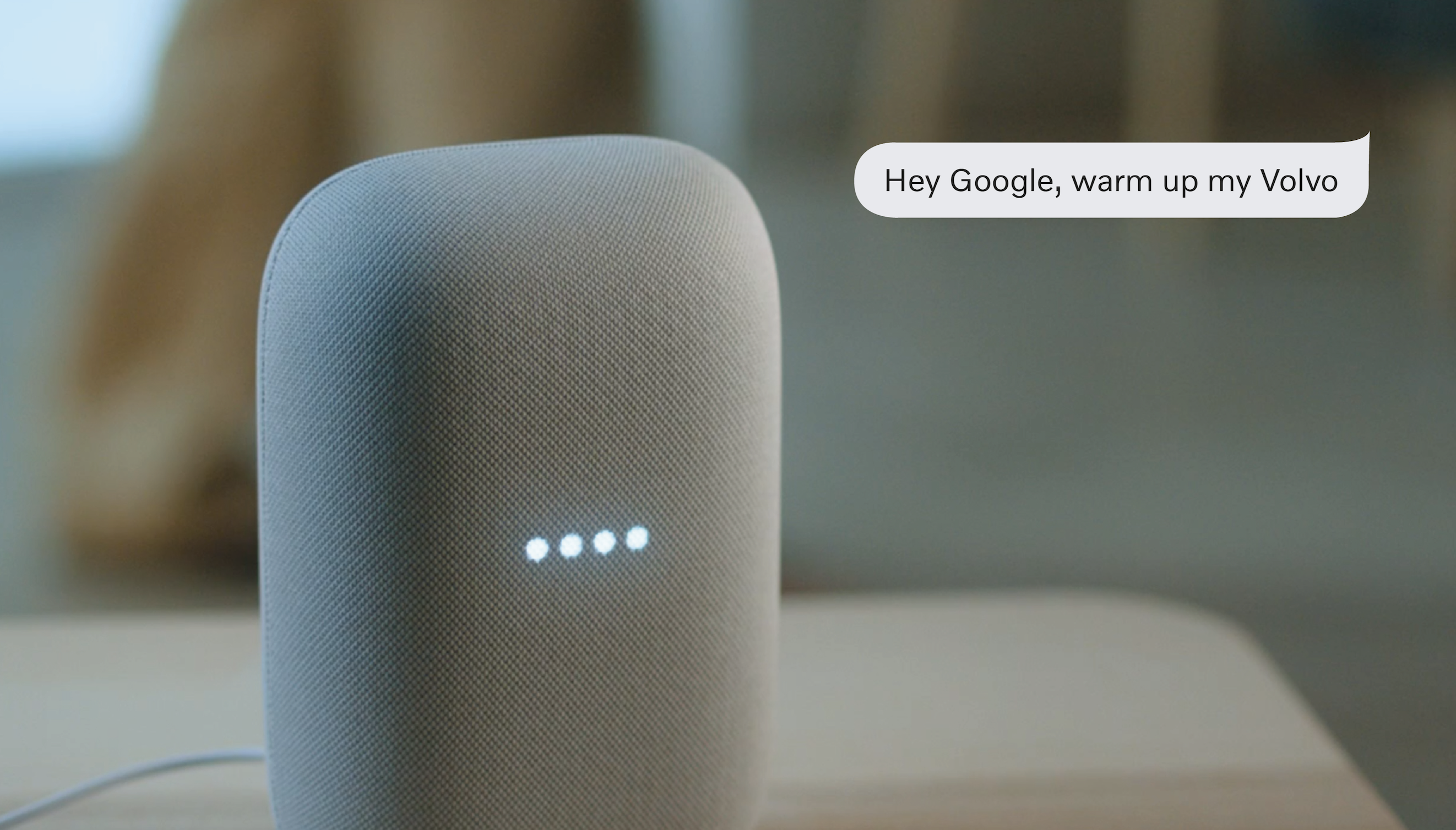
Image Credits: Volvo Cars
Many cars today run their infotainment systems off of Android’s auto operating system, making it easier to access your phone and compatible apps on your phone from your car. This year, Google took it a few steps further.
Volvo and Google announced an integration with the Google Home ecosystem, which would allow Volvo car owners to issue voice commands to Google Assistant-enabled devices. They can tell the assistant to do things like turn the car on and off, heat it up or cool it down and provide car info like battery life. Volvo also shared plans to enable YouTube app downloads, thanks to both Google integrations with Volvo vehicles and Qualcomm’s Snapdragon cockpit.
Google also added features to its digital car key with BMW, which enables users to lock, unlock and start certain BMW cars with select Google Pixel and Samsung Galaxy phones. Now, the car will automatically unlock itself when the device gets close enough, and users can share their digital car key with friends or family.
Amazon
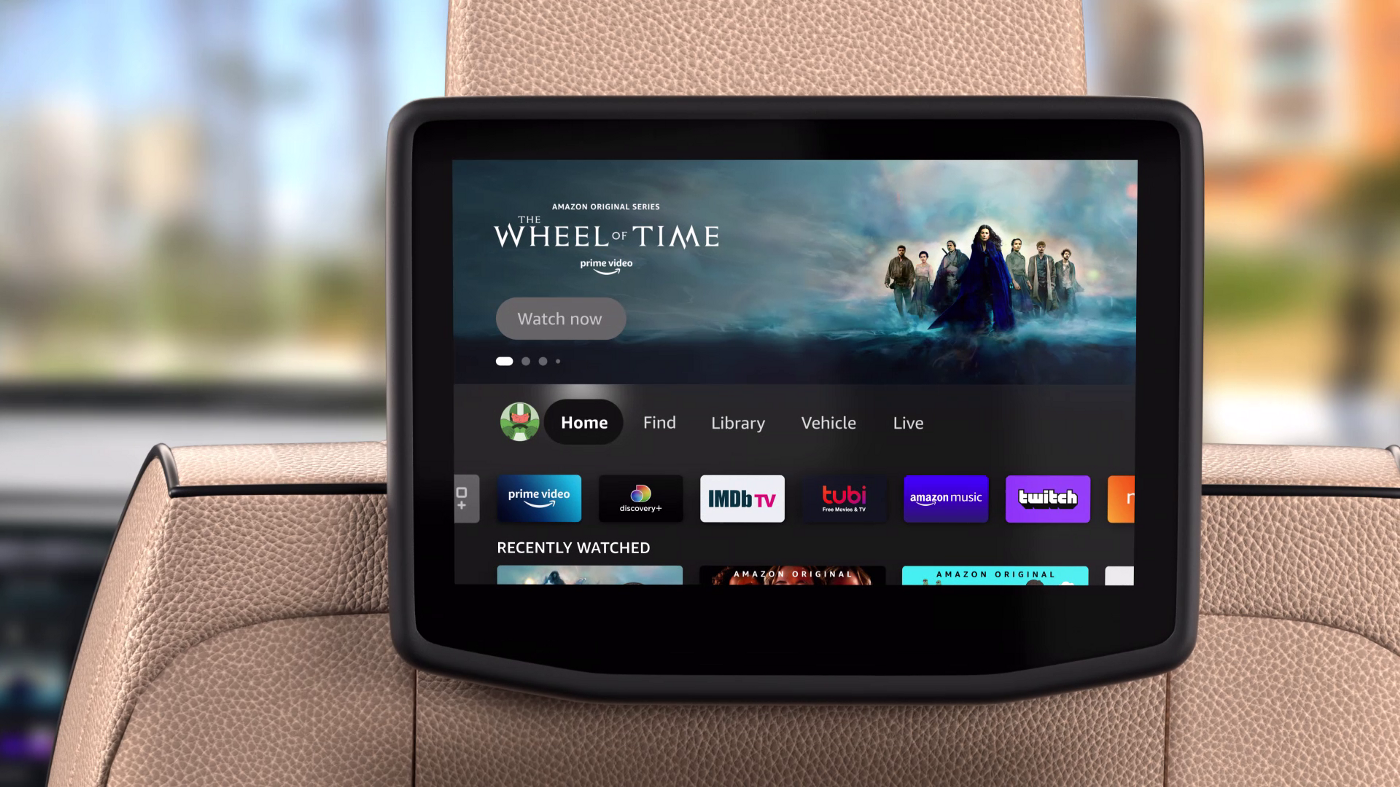
Image Credits: Amazon
In previous years at CES, Amazon showed up in a number of vehicles via its virtual assistant Alexa. This year, the power of Alexa is combining with Amazon’s Fire TV streaming platform, which is working its way into more cars.
Last year, global automaker Stellantis integrated the Fire TV into its vehicles, and at CES 2022, we’re seeing the in-car entertainment systems of certain Jeep, Chrysler, BMW and Ford vehicles get an upgrade, as well.
Fire TV for cars will do more than offer a TV streaming platform. It’ll sync with Alexa so drivers and passengers can simply speak a command and poof!, “Olaf Presents” is playing in the backseat and your children are blessedly quiet. Users can also ask Alexa to show their Ring doorbell video on the Fire TV using voice commands.
Stellantis is getting even cozier with Amazon. At CES 2022, Stellantis announced a wide-ranging collaboration that will touch nearly every aspect of its business. Amazon’s technology will be used to help Stellantis develop vehicles, build connected in-vehicle experiences and train the next generation of automotive software engineers.
As part of this multi-year deal, Stellantis has selected Amazon Web Services (AWS) as its preferred cloud provider for vehicle platforms. Stellantis, which recently launched a software academy for existing and new employees, is also working with AWS to create a curriculum that will cover software, data and cloud technology.
Cerence
Software company Cerence unveiled its Cerence Co-Pilot, an in-car assistant that uses continuous learning to anticipate the needs of drivers and proactively initiate actions. The co-pilot is integrated with the car’s sensors and data to understand the environment inside the vehicle and around it, analyzing things like voice, gaze, gesture and touch to understand user preferences and perform actions on the driver’s behalf.
Cerence’s co-pilot can do things like control smart home and IoT devices, authorize payments for in-car purchases and remind drivers about car maintenance needs, even scheduling a trip to the shop for them.
While the company didn’t share which automakers are signed onto integrate the co-pilot, a video demonstrating the tech showed such brands as Volvo, BMW, Audi and Mercedes, some of which have worked with Cerence in the past.
Blackberry
Blackberry announced a partnership with Pateo, an internet-of-vehicles service and product provider in China, that will see Blackberry Ivy, the company’s intelligent vehicle data platform co-developed with Amazon Web Services, integrated into Pateo’s digital cockpit solution. The two companies are to work with an unnamed Chinese automaker to pilot the cockpit on its electric model lineup.
The software company most renowned for its mobile phones didn’t share much about what that cockpit would look like, but it should encompass such features as intelligent voice, entertainment, vehicle health monitoring, secure payment and cloud technology. Blackberry and Pateo will also incorporate Electra Vehicles’s EVE-Ai 360 Adaptive Controls that provides prediction of battery state of charge, state of health and project vehicle range.
ADAS/AD
In past years, autonomous driving took center stage. This year, the focus was more on advanced driver assistance systems and promises to bring restricted automated driving features to passenger vehicles. Due to the advancements in vehicle sensors, compute power and software, automakers are working to automate certain aspects of the car, like parking or highway driving.
That doesn’t mean some companies pursuing so-called Level 4 autonomous driving didn’t show up at CES; they just weren’t the ones yelling the loudest this year.
GM’s Ultra Cruise
As we mentioned earlier, GM’s new Ultra Cruise hands-free ADAS system will be powered by Qualcomm’s Snapdragon SoC. GM introduced the Ultra Cruise system in 2021, but this was the first time we heard more details about the compute and some of the capabilities.
The system is an upgrade from the automaker’s Super Cruise ADAS first introduced in 2017, and it’s expected to be able to handle 95% of all driving scenarios.
Ultra Cruise, which is coming to the new electric Cadillac Celestiq in 2023, will rely on sensors like cameras, radar and lidar (not just lidar map data) to feed data to GM’s software that will then output decisions.
Volvo’s Ride Pilot
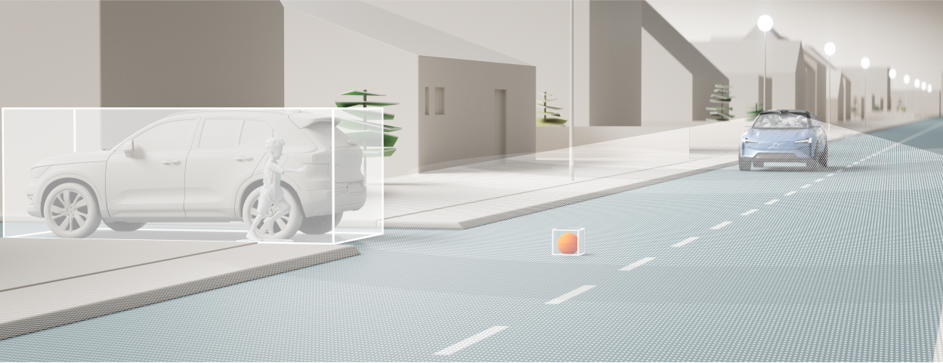
Image Credits: Volvo Cars
Volvo shared plans to work with lidar company Luminar and AD software company Zenseact to introduce Ride Pilot as an add-on subscription to an electric SUV that will be revealed later this year. Ride Pilot is an “unsupervised” AD feature, meaning it can drive itself fully while drivers are on certain highways, giving them the ability to go completely hands and eyes free so they can enjoy other activities, like the YouTube watching we mentioned earlier.
JiDU
Chinese internet giant Baidu’s EV startup JiDU came to CES 2022 with news that it would power its first production EV model, which is expected to begin deliveries in 2023, on Nvidia’s Drive Orin SoC (as mentioned above). The company said it would have Level 4 autonomous driving capabilities, all of which would be revealed in April at the Beijing Auto Show.
JiDu is just a year old and recently demonstrated intelligent assisted driving in both urban and high-speed areas in its SIMUCar.
Cadillac
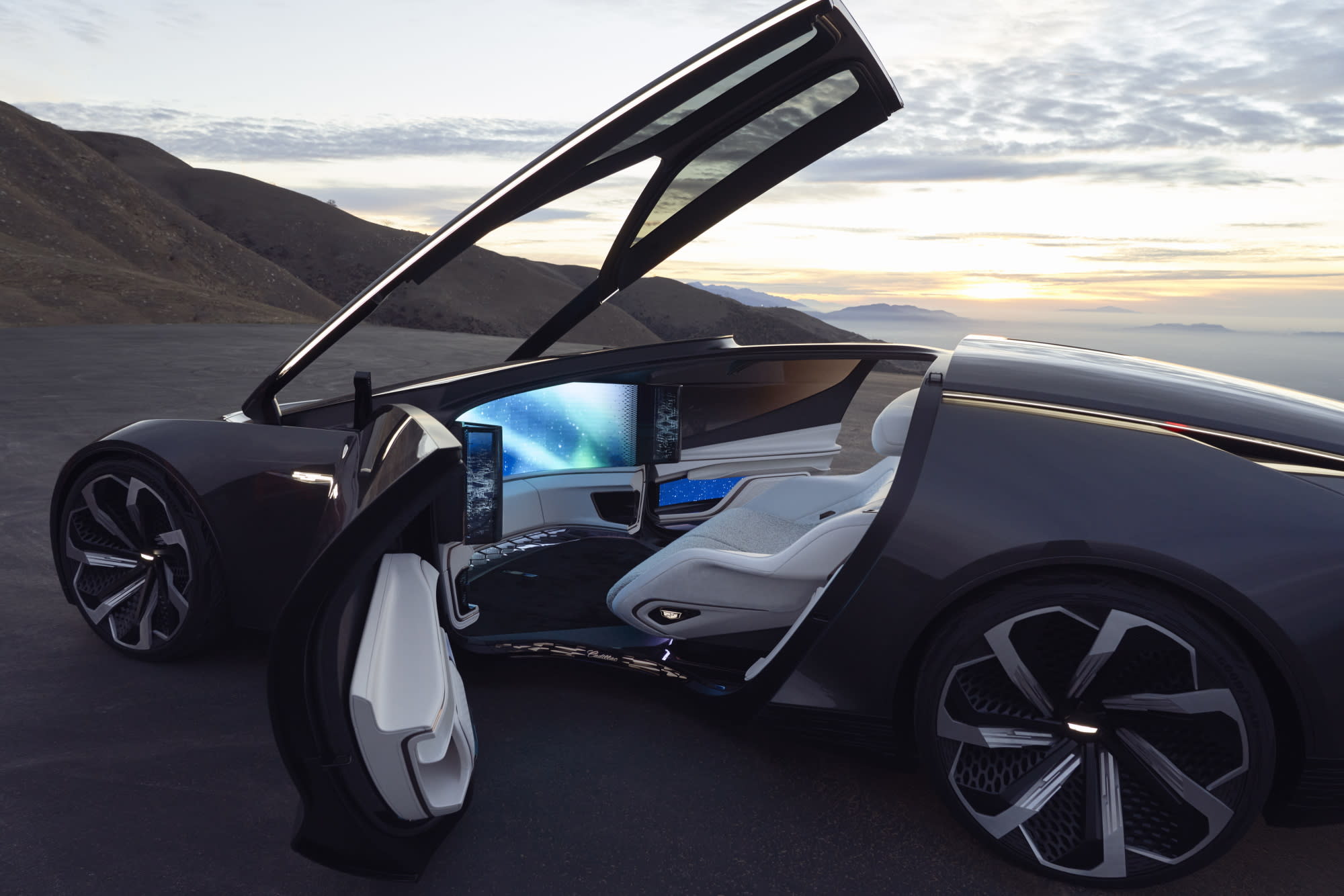
Image Credits: Cadillac
While not entirely focused on autonomous driving capabilities or ADAS features, it’s worth noting how Cadillac envisions the inside of its future autonomous vehicles. Its InnerSpace concept shows your standard spaceship-looking two-seater car from the outside, while inside it still looks like a spaceship. But like a sexy spaceship.
Rather than separate driver and passenger seats, there’s a plush and sleek loveseat that appears to constantly be in recline mode, which checks out given the built-in ottoman and compartment for slippers and a blanket. A mere couple of feet in front of the passengers’ heads is a wide, curved screen. No steering wheels or pedals are featured.
Indy Autonomous Challenge
Last October, teams from around world converged on the Indianapolis Motor Speedway to demonstrate autonomous racing.
The teams gathered again, this time at the Las Vegas Motor Speedway on Jan. 7 with the Autonomous Challenge @ CES. IAC university teams developed the software that runs the autonomous racecar, the Dallara AV-21.
Leading up to the event, the organization published a few videos, including this one that was filmed at night.
NFTs, color changing cars and other fun stuff
Vinfast
In addition to revealing three new EVs at CES this year, Vietnamese EV company Vinfast announced the formation of its Early Bird reservation site. The first to pre-order will receive a “VinFirst” certificate on the blockchain platform in NFT form, which the company says is a completely transparent way to prove ownership of an order number.
The term “digital twin” popped up a few times in the automotive sector at CES 2022, including an announcement from Cerence and Vinfast. The gist is this: Cerence has cloud-based software that allows Vinfast (or any other company intrigued by the product) to create a virtual representation of its entire car, including software, mechanics, electrics, and physical behavior, along with driver data and environmental data.
Indi EV
Indi EV, a California-based EV startup, came out with a prototype of its Indi One at CES, which the company says is “the world’s first social media-oriented car.” What that seems to mean is a car that has an integrated computer for gaming, a complete Windows workstation that can handle Zoom calls and even record events that can later be shared on social media and software that lets riders capture trip content and video to be uploaded to the cloud.
If all that wasn’t enough, the Indi One is meant to enable a type of mobile blockchain, wherein each vehicle can act as a node for a blockchain. Exactly why that’s significant is unclear, but You Do You, Indi EV. Customers can start pre-ordering by the end of Q1, and the car is expected to go for around $45,000.
BMW
BMW unwrapped its color-changing car at CES, the BMW iX Flow. Right now, the e-paper wrapping the vehicle can only change between black and white, but more colors are expected in the future which will enable users to give their car a more personalized look to match their mood.
Nextbase
Dash cam tech company Nextbase unveiled its smart and connected dash cam, the Nextbase iQ. It gives drivers a lot of the same safety and security features they would get in their home-monitoring systems, like real-time alerts and access to incident video even while they’re away from their car. Users can also get real-time access to the dash cam from anywhere at anytime through the iQ app.
Mercedes-Benz
Finally, Mercedes revealed the Vision EQXX, a concept vehicle that is meant to showcase what the automaker’s electric future will look like. This eye-popping sport EV wasn’t just about aerodynamics and a sleek design. The company squeezed in power, efficiency and range into the compact and sporty package.
Some of the neat tech in the EQXX worth noting is the one-piece 47.5-inch LED display with 8K resolution. The infotainment screen has responsive real-time graphics that will span the width of the vehicle, according to Mercedes.
The automaker worked with NAVIS Automotive Systems to develop a 3D navigation system that users can zoom into and scroll around for this massive screen. And like the company’s newer models, the EQXX also featured an advanced voice assistant and software that learns your behavior over time.
Lidar companies try to make a concrete value prop
In the lidar world, Luminar’s eyebrow-raising stunt comparing Tesla’s ADAS system to its own (to the peril of several child-size dummies) was affecting, and its inclusion in Volvo vehicles and Mobileye systems is a coup. But it’s still an expensive and complex system, a major investment with uncertain (if potentially significant) benefits.
Manufacturers are struggling to produce something that creates a useful outcome for a vehicle at a reasonable price. Costs haven’t come down as much as they’d like, and there’s still confusion over who does what in a perception stack.
Blickfeld is attempting to take over as much as possible, for instance, with on-device movement detection, object classification and so on, which could make their devices easier to drop in — or possibly make them partially redundant with an already intelligent in-car computer vision system.
Arbe is focusing more narrowly on what it calls “free space mapping,” where it doesn’t matter if it’s a bush or a raccoon or what — the question is, is it safe to drive on? A quick, dedicated sensor for identifying driveable surfaces in the vicinity could be a useful feature and one that contributes to the autonomous vehicle collective intelligence.
Innoviz is improving on the traditional spinning puck lidar type, which has proven to be useful in many circumstances. A cheaper, better version may find success where trailblazer Velodyne has over the years.
Similarly, Voyant Photonics is leaving the whole automotive market to deeper pockets, focusing on producing its tiny, inexpensive lidar unit for robotics and industrial applications, where certifications and liabilities aren’t quite so intense.
There’s no doubt lidar has a future in autonomous vehicles and other equipment, but what form it will take and how much people will pay for it — that’s still very much up in the air, something that no doubt makes everyone in the sector a little nervous. — Devin Coldewey


